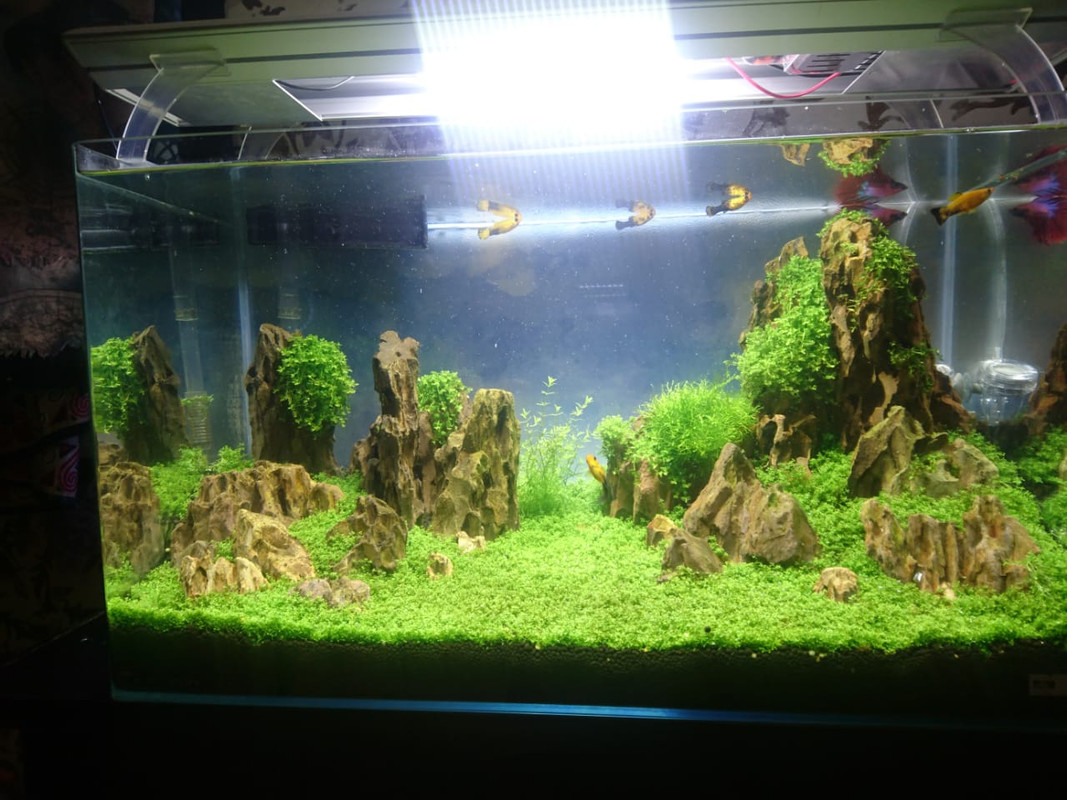kashif314
Aquarium Advice Addict
- Joined
- Jan 9, 2017
- Messages
- 1,377
Its a long post. Kindly please read and advise. So we were at the store and my wife saw one tank and fall for it. I am into low tech setups always so this is first high tech setup. The store guy installed at our home and helped us but i have some questions please. Its a 15 gallon (60 litre) tank.

My questions are:
1) Its all dwarf baby tears carpet which likes high to very high light. We have very bright led and pressurised co2 system and the guy told us to have 3 bubbles per second approach. However i want to know if its too much or too low for dwarf baby tears as i read its an expert plant and light is high so may need a good amount of co2. I read and there are some difficult methods to measure proper co2 method but the guy said to just make sure its 3 bubbles per second and i want to keep it wasy as simple so please advise if its the right approach.
2) i noticed fish (platys) swimming near surface. Is it a sign of too much co2 in tank and they gasping for air?
3) Even after i closed the co2 cylinder fully i can still see a bubble emerges every few seconds. Its been like an hour since i closed the knob but still see bubble coming out after every few seconds. Does it take time to shut down like maybe some gas in air line tube? I double checked and the main cylinder knob is tight shut. Please have a look at this video.
https://youtu.be/saHVurU9RGU
So many questions. Please take your time and help. Thanks.

My questions are:
1) Its all dwarf baby tears carpet which likes high to very high light. We have very bright led and pressurised co2 system and the guy told us to have 3 bubbles per second approach. However i want to know if its too much or too low for dwarf baby tears as i read its an expert plant and light is high so may need a good amount of co2. I read and there are some difficult methods to measure proper co2 method but the guy said to just make sure its 3 bubbles per second and i want to keep it wasy as simple so please advise if its the right approach.
2) i noticed fish (platys) swimming near surface. Is it a sign of too much co2 in tank and they gasping for air?
3) Even after i closed the co2 cylinder fully i can still see a bubble emerges every few seconds. Its been like an hour since i closed the knob but still see bubble coming out after every few seconds. Does it take time to shut down like maybe some gas in air line tube? I double checked and the main cylinder knob is tight shut. Please have a look at this video.
https://youtu.be/saHVurU9RGU
So many questions. Please take your time and help. Thanks.
